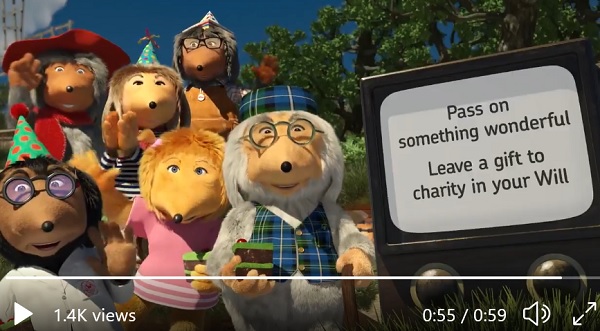The situation in Ukraine is urgent and shocking and changing day-by-day. It can be difficult to know how to respond as an organisation. Do you launch an appeal? Use the news to campaign? Do you share your expertise of war situations or launch a new service? Do you manage people’s worries? Or not mention it at all, business as usual, not wanting to add to the noise? How might that change as the situation changes?
Here are some useful links and examples of the sector’s response to help you plan your own.
Advice for charities
NCVO’s blog post by Alex Farrow looks at how charities and civil society can support Ukraine. It also explores potential implications on charities such as increasing costs, cyber attacks and disaster recovery. Clare Mills of CFG also shared thoughts about the potential impact of the crisis to the sector.
CIoF’s Daniel Flusky has written advice about fundraising during an emergency with some excellent tips for charities. This includes being clear about how donations will be used. Here’s a nice example of this from Hope and Homes for Children.
The Charity Commission issued a statement about potential implications of the crisis on charities and a reminder about running effective appeals and managing funds.
Fundraising Everywhere have started a list of consultants offering their time for free to support organisations running emergency appeals.
Examples of appeals
The DEC launched its appeal on 2 March. (Update – It has raised £100m in four days.)
UK Fundraising have a list of fundraising appeals launched for Ukraine.
Refugee Action haven’t launched their own appeal but have shared advice about how to help including appeals and actions people can take.
London Plus have a google doc of London organisations offering and fundraising for help.
With so many different appeals, it can be hard for anyone to know where best to donate. The Charity Commission shared how to give safely. OSCR in Scotland issued something similar.
Deborah Meaden tweeted a plea for people to donate money rather than items due to the difficulty of transporting supplies overseas. See also this post about donations of ‘stuff’ and the problems it can cause – Ever sent clothes or toys in response to a disaster?
Emma Insley wrote about why donating to AirBnB hosts might not be the right thing to do either.
Services and support
Some stories from Ukraine are still getting out at this stage. For example, this dog shelter received funds from ifaw.
UK charities have started to offer services to people with connections with Ukraine. For example Relate are offering free telephone support for people with family in Ukraine.
St John Ambulance translated their first aid advice into Ukrainian and Russian.
Citizens Advice shared information about bringing family members from Ukraine to the UK.
Communicating about war
ICRC shared a thread about the rules of war.
Help for Heroes are calling for the media to be sensitive about the way they communicate about the war. Here’s their comms guide.
Greenpeace are raising concerns about the divisive language used by some of the reporting.
The Rory Peck Trust are running workshops for journalists about reporting during a war. They also have a crisis fund to support freelance journalists working in the conflict area.
Full Fact shared tips about how to check that information is correct before sharing it.
Cruse have shared information about bereavement through conflict and war.
Campaigns
Some organisations are using the situation to raise extra profile about legislation changes going through parliament. Like the treatment of refugees – see Freedom from Torture.
And the Policing Bill from Greenpeace.
Engaging Networks shared a thread of appeals and campaigns.
Greenpeace are asking the Government to Get Off Gas.
Managing mental health
Mind offer tips about managing stress and dealing with anxiety.
5 ways to help manage your mental health during a stressful newscycle, from Rethink.
There are useful resources from BBC Newsround on how to talk to children about the situation. Tips from Save the Children and British Red Cross too.
Crisis comms or business as usual?
What comms mode are you in? If you are a disaster relief or humanitarian charity, you are likely to be in crisis mode. If your work doesn’t touch these areas, it can be hard to know how to respond. Is it insensitive to broadcast your everyday news and events? You’ll have to decide on a day-by-day basis as the situation changes. People still need good news and other work doesn’t stop during this time. But it is worth reviewing scheduled messaging, stopping any campaigns if needed and being conscious of the language or images you are using.
Many organisations are sharing messages of unity with Ukraine. A few have changed the colours in their logos, eg Women in Journalism, and this BHF charity shop decorated its window in the Ukrainian colours. What is right for your organisation?
It’s a good time to review your crisis comms plan and think about possible future scenarios and how you would react. Look especially at the NCVO post above (how charities and civil society can support Ukraine) about the possible impact on charities such as increasing energy costs and cyber attacks.
I’ve seen a few examples of companies returning to sharing important information as images of text (see this example from MandS). This inaccessible comms method was widely used lockdowns, especially by supermarkets and Government. See why you shouldn’t tweet images of text.
More
What stand-out content or appeals have you seen from charities? Please do share in the comments.
